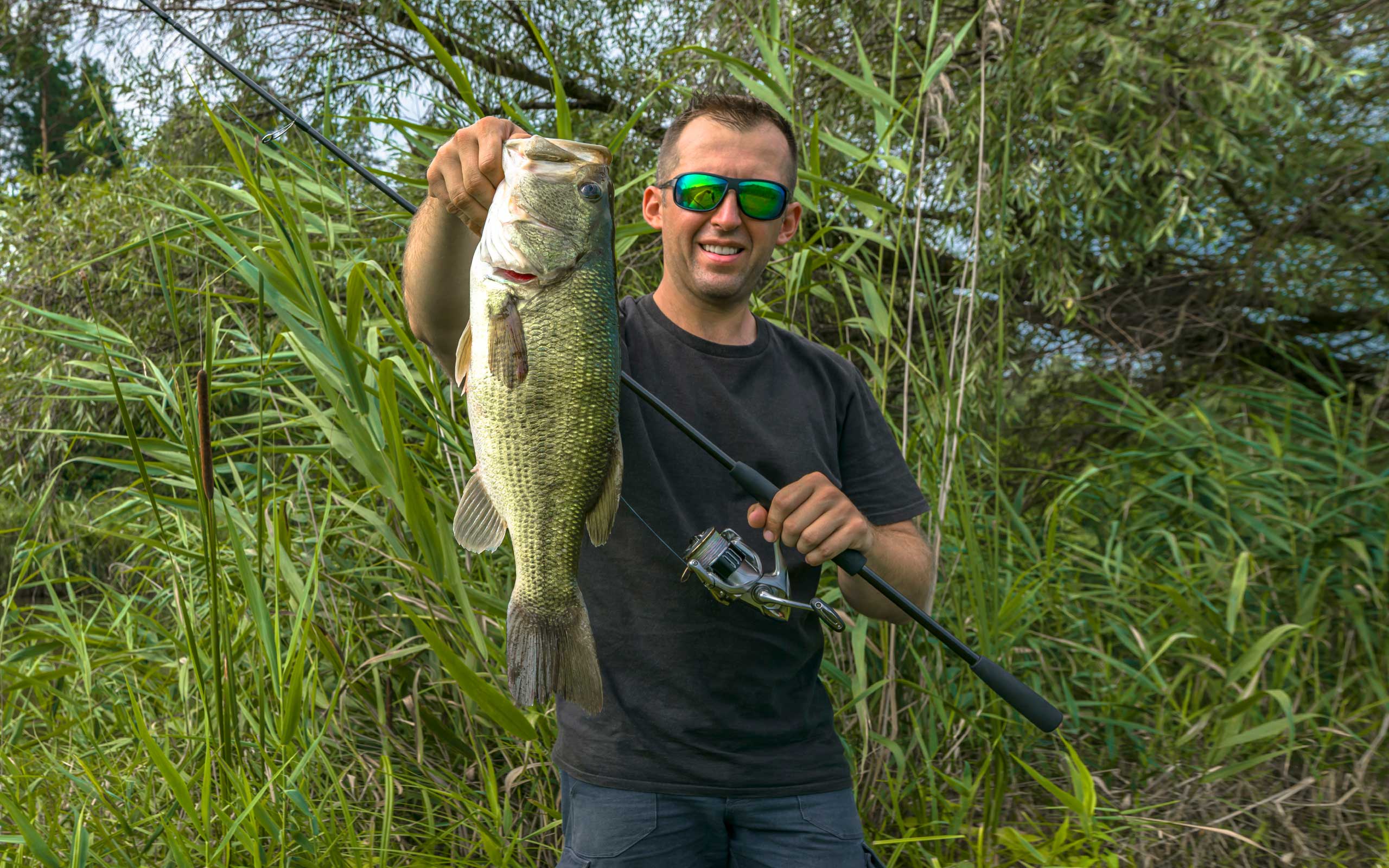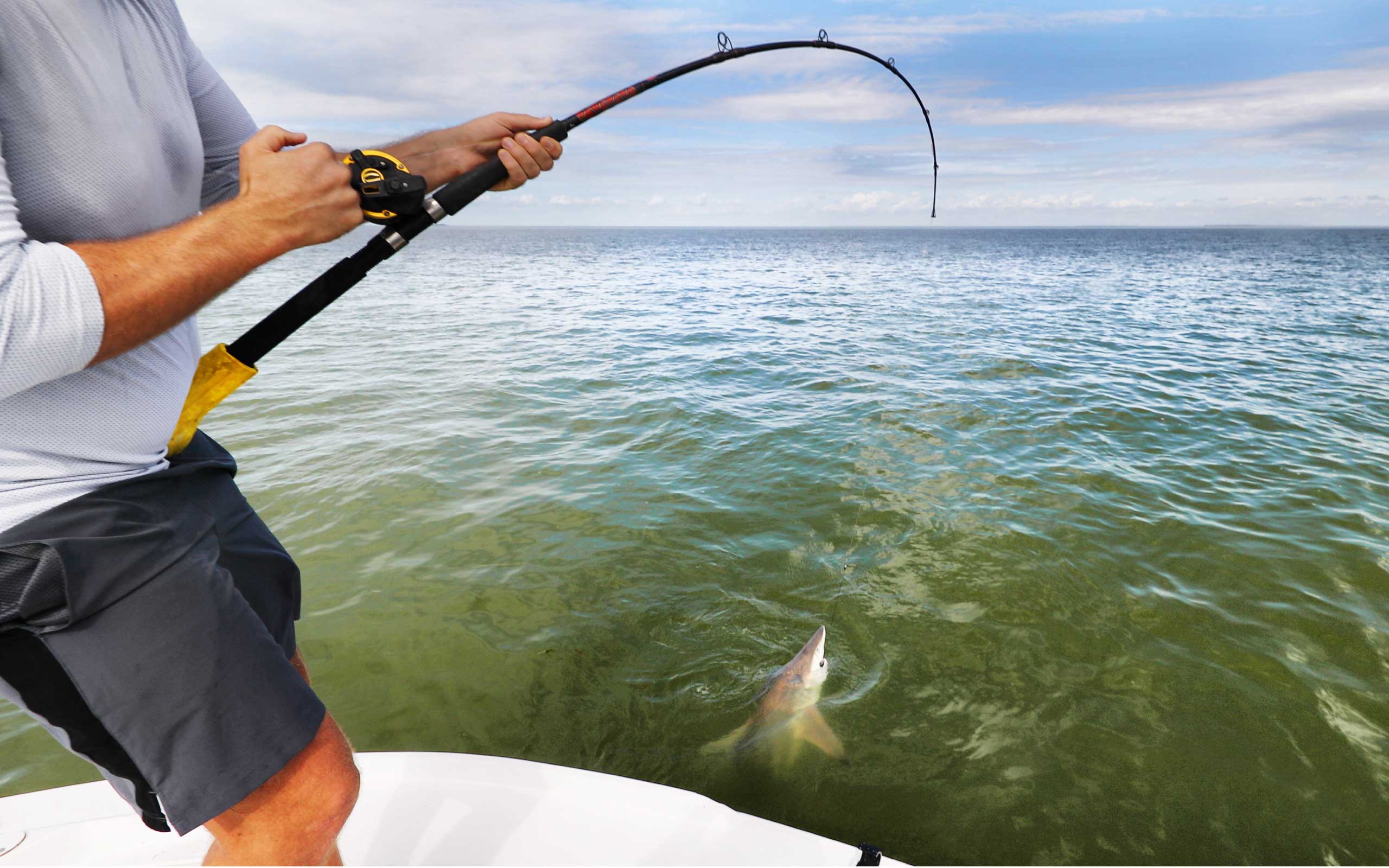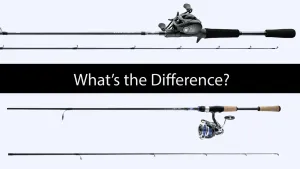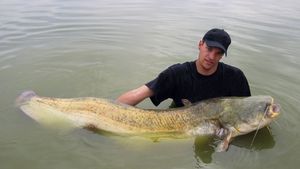Gear ratio is one of the most important considerations when searching for a new fishing reel. While it can be difficult to make sense of all the terms and metrics associated with different reels, understanding gear ratios and the meaning is critical in helping you choose the right product for your needs.
In this blog post, we’ll take a deep dive into every aspect of reel’s gear ratio - from how they're measured, to which type would work best given your desired fishing style - so that by the end, you'll have all the info you need to find yourself an ideal set up!
What is Gear Ratio and why does it matter for Fishing Reels
Gear Ratio is an important feature to consider when purchasing a fishing reel. It measures the speed with which a reel brings in the line and is specified with a number that reflects how many times the spool spins for one turn of the handle.
Generally, a high gear ratio allows fishermen to wind faster and are great for baitcasting reels using heavier lures, however, for lighter lures you may want a lower gear ratio due to less vibration on the line. In either situation, having a variety of different gear ratios available allows anglers to customize their equipment based on their preferences.
For example, if you are fishing in shallow waters, you may use a low gear ratio to slow down your retrieve and better feel any fish that might be hitting your lure but if you are fishing in deep water a higher gear ratio will help bring up those big catches faster.
Gear Ratio is a must-have feature for experienced anglers as it can make all the difference during those long days out on the lake or river.
Different types of Gear Ratios in Fishing Reels
When it comes to fishing reels, the selection of different gear ratios can often be overwhelming. But it's important to understand that each has its own purpose and advantages when out on the water.
Lower gear ratios are ideal for slow trolling or jigging large baits, while high-speed reels, with their higher gear ratio of 6.2:1 and up, are great for fast retrieves on baitfish and smaller topwater lures.
Models in between, such as 5:1 models, are preferred for all-around performance that is suitable for multiple applications. It all just depends on what kind of results you wish to achieve from your fishing reel - and now you know some of the different types of gear ratios available!
Factors to Consider when Choosing the Right Gear Ratio for your Fishing Reel
When it comes to choosing the right gear ratio for your fishing reel, there are several factors that you should consider. Have an idea of what type of fish you will be looking to catch; certain reels are better equipped for particular species than others.
Also, consider the speed of your retrieve based on how fast or slow you plan on bringing in your catch - higher gear ratios (meaning a higher number) will allow for faster retrieves, while lower ratios provide slower and more controlled retrieves.
Furthermore, think about the type of fishing line you plan on using as this may affect which gear ratio is optimal. Consider these points when selecting a reel so that you can successfully maximize your fishing experience!
Pros and Cons of High-Speed and Low-Speed Gear Ratios for Fishing Reels
Finding the right gear ratio for your fishing reel is an important decision which can make a huge difference to your success on the water. The higher speed reels are best for faster lure presentations, such as topwater pops and light trolling, while lower speed reels have more torque, making them better suited to heavy presentations and slow crank bait retrieves. Both offer their own advantages and disadvantages when out on the water.
High-speed reels tend to cut down on line memory and give quick retrieval speeds that are great for covering more surface area quickly, but they can be harder to precisely control the depth of lures due to increased line momentum.
Low-speed reels are great at those deep crank bait drops or jigging applications but with fewer ball bearings they don't have as smooth of a feel when retrieving. In the end, choosing between low-speed and high-speed gear ratios depends on what kind of fishing you're doing – so do your homework and decide which one is best for you.
How to Choose the Best Gear Ratio for your Needs
When it comes to selecting the best gear ratio for your individual needs, there are several factors to consider. Firstly, it is important to identify what kind of activity you’ll be doing as this will affect the type of ratio that is necessary.
If you plan on doing hill climbs or mountain biking, a low range can help improve overall speed and performance, while if you’re road cycling a higher ratio may be beneficial. Additionally, where you will be riding should also factor into your decision; if you plan on using rough terrain often, a lower range will provide better torque and traction.
Finally, wheel size should be taken into account in order to maintain a comfortable cadence while in motion. Ultimately, choosing the most suitable gear ratio means taking all these elements into account before making a final choice.
Tips on Maintaining a Fishing Reel
Keeping a fishing reel well maintained is an essential part of any fishing trip. Making sure the reel is properly lubricated and functioning correctly can lead to increased success with fewer tangles and more fish caught.
One tip for maintaining a spinning or baitcasting reel is to thoroughly clean it after each use, removing any sand, salt or other materials that may have built up on it. Then lubricate moving parts such as bearings and gears with light weight, high quality oil.
After this, it is important to store the reel in a dry place away from dust and dirt. With these simple tips your reel will be ready the next time you want to hit the water!
Final Thoughts
The gear ratio plays a critical role in your fishing success. The gear ratio of a reel determines how much line is retrieved with one crank of the handle and directly impacts the speed at which you can cast and retrieve bait from the water.
There are a variety of different gear ratios available for fishing reels, each offering their own pros and cons. High-speed gear ratios are best for topwater lures, but can be too fast for slower or lighter lures, whereas low / slower speed models offer smooth retrieves but have less power.
Therefore it is important to evaluate all factors when deciding which gear ratio works best for your fishing techniques and style of fishing. While every fisherman may necessitate different turns of rotation to rework his/her perfect setup, being knowledgeable about the features offered by each make and model should help you narrow down the options on what's best for your rod setup.
Proper maintenance of your reel is essential to ensure optimal performance and will help maximize the lifespan of your equipment regardless of the type of gear ratio in use.
Q & A
What is the best gear ratio for fishing walleye
When it comes to fishing for walleye, the debate over what is the best gear ratio often rages on. While there's no definitive answer that works for everyone, generally speaking, the ideal gear ratio when fishing for walleye will depend on several factors including water depth, type of lure being used, and weather conditions.
For shallow water and light lures such as jigs or crankbaits, a higher gear ratio (i.e., around 6:1) is recommended due to its increased cranking power and speed which can more effectively set a hook at faster speeds. This is especially beneficial in cold weather when fish may be more sluggish.
When targeting deeper waters with heavier lures like deep diving crankbaits or swim baits however, lower speed reels (4:1 or 5:1) or low gear ratio reels are typically preferred due to their greater torque and line capacity which allows anglers to employ various techniques such as trolling or slow presentations in deep and rough waters with slower cranking ability from larger reels that have smaller lines than high-speed models.
Ultimately though, finding the right overall reel setup depends heavily on personal preference as every fisherman has their own opinions about what works best in certain conditions -- trial and error should always be your primary guide when trying different combinations of rods/reels/lures specific to your target species. Check out our top 5 best spinning reels for walleye.

What is the best gear ratio for bass fishing
For bass anglers, the best bass fishing gear ratio is largely dependent on the type of bass fishing you are planning to do. Generally, for spinning tackle and crankbaits, an all-purpose gear ratio is 6.2:1 or 7.0:1, depending on the size of bait used.
For flipping and pitchin' jigs and creature baits, a slower more powerful option such as a 5.3:1 or 4.9:1 is often preferred by serious anglers due to its ability to pull hard against big fish that may be hooked up in heavy cover or weeds with minimal risk of spooling line too quickly if a big one takes off suddenly after being hooked.
For finesse tactics such as drop shotting and wacky rigging it is recommended to use higher speed reels reversing back down into the 6+ range (6.2-7). High gear ratio reels help reduce cranking time of the while allowing you to keep your lure in the strike zone longer (since they retrieve line faster) - this can make all the difference when detecting subtle bites from finicky bass!
The best advice when selecting your gear ratio would be to match it up with what kind of conditions you plan on mainly targeting throughout the day – heavier lures/cover = lower speed reel; lighter lures/less cover = higher speed reel… and always remember that there’s no single “best” gearing setup for any situation!
What is the best gear ratio for a spinning reel
The best gear ratio for spinning reels depends on the type of fishing you are doing. If you’re looking to catch small fish such as panfish, trout or bass in smaller rivers or streams then a slower gear ratio, typically around 4-5:1 is ideal since it gives you more finesse and control when battling the fish.
Higher gear ratios such as 5-6:1 are better suited for catching larger gamefish like pike and walleye in deeper waters. These higher ratios enables anglers to quickly pull lures out of weeds and debris, so they can get back into deep water more quickly.
For fast trolling applications that utilize crankbaits or spoons often used for salmon fishing, a 6-7:1 reel is recommended since it will allow anglers to retrieve lures with minimal effort even when the line is weighted down by heavy current or wind.
Lastly, if you’re targeting topwater species like barracuda then an ultra high speed reel with 8+ :1 gear ratio is best since it provides enough power to make long casts while maintaining an impressive rate of retrieve during the fight will give you extra leverage against big game fish.

What is the best gear ratio for saltwater fishing
The best gear ratio for saltwater fishing depends on a variety of factors, such as the types of fish you’re targeting and the type of fishing method you are utilizing. Generally speaking, saltwater conditions can vary rapidly and require more line capacity compared to freshwater fishing.
For bottom-fishing from a boat or shoreline with bait, ratios between 4:1 and 6:1 work well because they provide enough power to pull in heavier catches. If you’re trolling for larger predatory fish like tuna or wahoo, choose a higher-speed reel with a high gear ratio up to 8:1.
When using artificial lures like jigs or poppers for surface action, weaker gears (around 6:1) will make it easier for anglers to execute quick retrieves without having too much torque applied when setting the hook. For slow presentations where depth is critical, go down one speed level lower than your standard gearing (e.g., 5:1 rather than 6:1).
No matter what your target species is, look for reels that provide excellent anti-reverse functions so that backlashes don't occur when casting out far into deep waters while fishing under windy conditions.
Additionally, pick models with sealed drag washers which help keep elements out and ensure smooth fight even after intense struggles against large catches over long periods of time!
Happy Fishing!
Adventures in Fishing is a participant in the Amazon Services LLC Associates Program, an affiliate advertising program designed to provide a means for sites to earn advertising fees by advertising and linking to Amazon.com.



